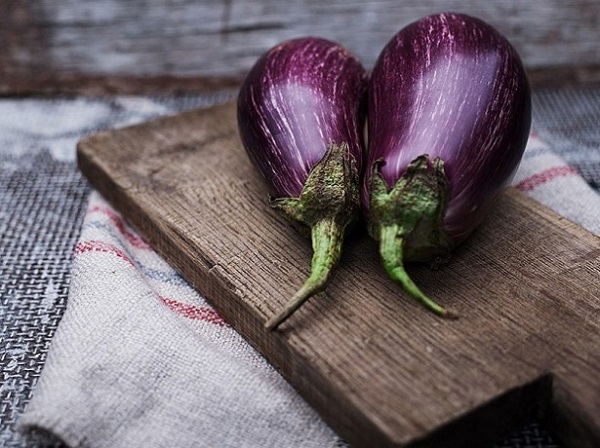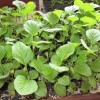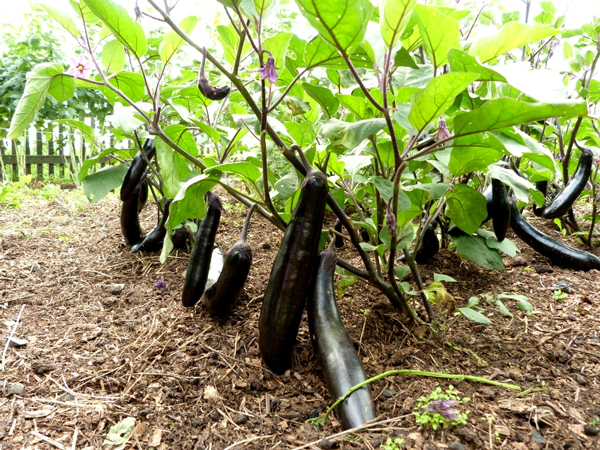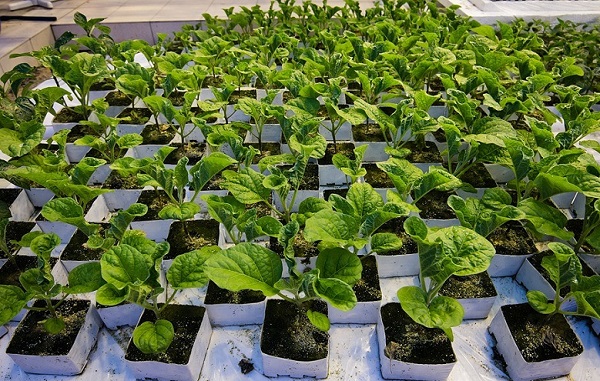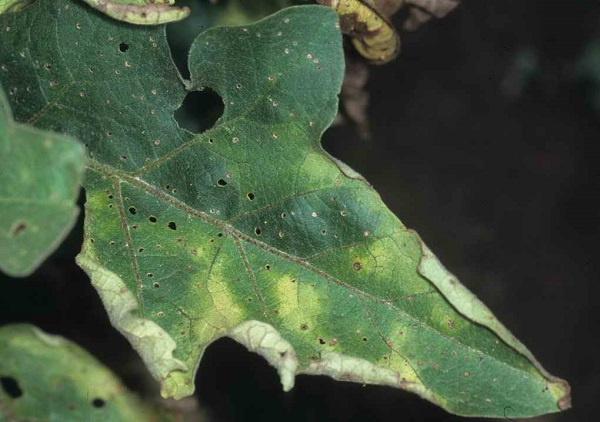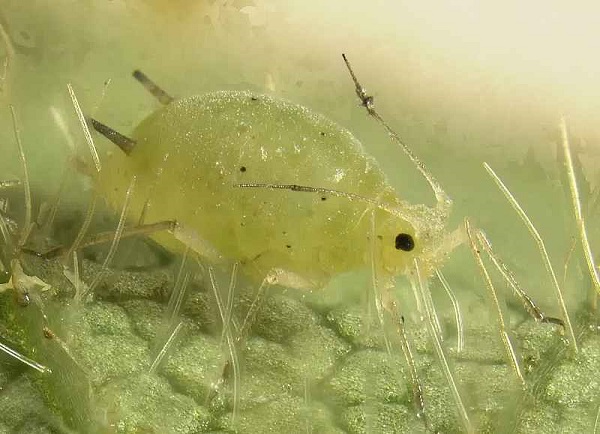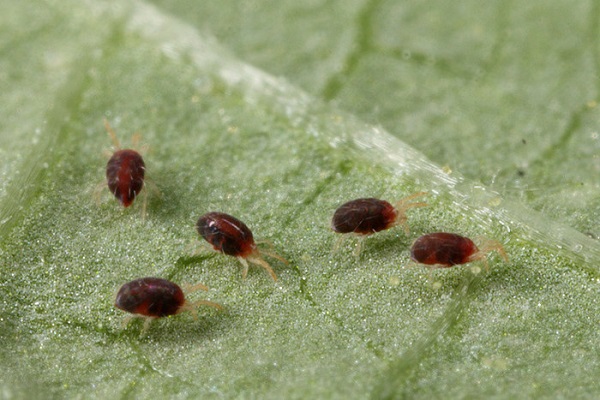Disease and pest control methods eggplant
Content
Diseases
The most common diseases of eggplant are late blight, verticillium wilting, gray and soft rot, anthracnose, cercospora spot. Violation of the conditions for caring for eggplants leads to the fact that these diseases comprehensively affect the plant, knocking down their normal growth and development. Fighting them is not easy, but the chance of success is quite high.
Late blight
Fungal diseases are a real curse for plants in the greenhouse. Their detrimental effect on eggplant leaves could be a good subject for a horror story.
Late blight manifests itself in the first half of the season, affecting the leaves, stems and developing fruits of eggplant. The green part of the plant is covered with rusty spots with a light green halo around, a whitish bloom spreads along the lower part of the leaf. In a short time, the leaves curl, wither, and then fall off.
Why does it appear? Due to a violation of crop rotation, with high humidity and lack of plant immunity.
What to do to get rid of late blight? Treatment, in this case, consists in treating the plant with a solution of copper sulfate. It is important to process the bushes in the evening in calm, dry weather. If the disease develops during the fruiting period, then any chemicals are excluded. It is better to use folk remedies such as garlic tincture. To prepare it, take 1 glass of garlic cloves, ground into a gruel, pour 2-3 liters of water, leave to infuse in a dark, warm place for 5 days. Strain the finished solution, dilute 1: 3, and then start spraying.
Withering
Verticillium wilting develops with a sharp change in temperature in the greenhouse, affecting the entire plant.
Why does the disease appear and how does it progress? Eggplant leaves wither due to a violation of the integrity of the vessels, which leads to the early death of the plant. The stem turns black from the inside, becomes slimy and soft. Verticillosis spreads through the root system if it is damaged mechanically or due to insects. The affected tissues become overgrown with a whitish bloom - fungal spores. The main danger of verticillosis is that it persists in the soil and plant debris, that is, the risk of re-infection is high.
What to do? The fight against verticillium wilt primarily consists in the preventive destruction of weeds, the treatment of plants with insect repellents. Certainly, crop rotation should be observed - do not plant the same plants for several years in a row in one place.
Direct treatment can be carried out with fungicidal preparations: "Previkur", "Topsin-M", "Trichodermin". You should also root top dressing with wood ash infusion or superphosphate.
Video "Why do eggplant leaves wither"
The reasons for the wilting of leaves on eggplants and how to combat this phenomenon are discussed in the video.
Gray rot
Growing eggplant in the absence of crop rotation in the greenhouse makes them vulnerable to all fungal microflora.
Why does it appear? Gray mold spreads through soil and plant debris, especially if the relative humidity is high. Watery brown spots appear on the leaves, after a few days a gray bloom forms on top of the spots.
What to do? Preventive care for eggplants consists in treating with fungicides, disinfecting the soil and plant seeds before planting, observing crop rotation. The greenhouse should be regularly disinfected with Zircon and Fitosporin preparations. It is imperative to carry out pinching and pinching.
Treatment of the disease occurs under the sign of normalization of air temperature, humidity, watering. It is imperative to remove the affected parts of the eggplant, cover the sections with lime or wood ash. Plants need to be treated with Horus or Antracol preparations.
Soft rot
A rare guest in the greenhouse is soft rot. But when it appears, it will cause colossal harm to the plantings.
Why does it appear? It develops exclusively in hot weather, with low watering at any stage of eggplant development.
The plant becomes covered with spots, from which the leaves wilt, their appearance is rapidly deteriorating. Due to the violation of vegetative processes, eggplant, which has survived to the fruiting stage, forms small, weak fruits with a bad taste.
Prevention of the appearance of soft rot consists in choosing varieties resistant to it: Nancy F4, Alekseevsky. It is imperative to process the seeds before planting, fertilize and plant greens only in the ground pretreated with antiseptics.
It is necessary to treat the disease by spraying with bordeaux solution, fungicidal preparations based on chlorotolonil, prochlorase.
Anthracnose
As in the case of peronosporosis, the plant affected by anthracnose is covered with gray oval spots with a brown border. After a while, these spots turn into tubercles, and then overgrow with a fluffy white bloom with black dots. The fruits are ulcerated with cracks, and quickly begin to rot.
Why does it appear? The increased humidity in the greenhouse, at a total temperature of 15-20 ° C, creates ideal conditions for the development of anthracnose.
As a preventive measure, as with all fungal diseases, crop rotation should be observed, the air temperature and humidity in the greenhouse should be monitored, and antifungal spraying of plants should be carried out. If a disease is detected, eggplants should be sprayed with Antrakol, Ridomil, and Revus preparations.
Cercosporous spot
Diseases of eggplant often affect the quality of fruiting, cercosporous spotting is no exception. The affected leaves are curled up and covered with small spots. Over time, they increase in size, leading to the death of living tissues. The spots are brown, turn black at the edges, often decorated with rings.
Why does it appear? If crop rotation is disturbed, fungal spores pass from the soil and plant residues to the planted eggplants. In warm, humid weather, the fungus is activated, quickly spreading through the greenhouse with wind and water droplets.
Preventive care involves regular fungicide treatment, seasonal plant transplantation to a new location, removal of old plants from the site, and eggplant thinning.
When a disease is detected, it is important to remove infected leaves and shoots, and to process eggplant and soil with fungicidal preparations.
Improper care
Caring for plants is an important part of their abundant fruiting and tasty fruits. Eggplant diseases are actively developing and spreading because vegetables usually grow in inappropriate conditions. It is necessary to maintain an adequate microclimate in the greenhouse so that the plant grows without unnecessary problems.
Eggplant loves abundant heat and moisture, a comfortable temperature of 25-30 ° C. It is very important to ensure that high temperatures are supported by air humidity and timely watering. In this case, eggplants grow by leaps and bounds, their cultivation is noticeably accelerated.
Despite the exactingness to the frequency and abundance of watering, it is not recommended to flood the plants, especially with cold water. Do a few moderate waterings a day so that the plant has time to absorb moisture, but is not at risk of root rot.
With a lack of mineral and organic fertilizers, especially nitrogen, eggplants grow more slowly, their leaves curl, and spots appear on them. Complex fertilization is one of the ways to develop and strengthen the immune system of eggplant. And regular foliar and root feeding will provide the plant with a reliable airbag, even if the surrounding conditions are unstable.
You cannot refuse pinching - this way you prevent the plantings from becoming dense, provide access to fresh air and light. Moreover, it stimulates the eggplant to release more flowers and produce more fruit.
Pests
Eggplant pests are numerous, quirky and difficult to deal with. This is mainly because most insect species (their ancestors) have developed immunity to a number of chemicals, which forces gardeners to use strong pesticides. This harms the plants, making them more vulnerable to disease. But growing eggplant without pests is possible if you know in advance the weaknesses of the enemy and do not let things take their course. It is important to ask the question "Why do they live so well in the garden?" and violate favorable conditions.
Aphid
Aphid infestation is a real disaster for eggplant. Small insects literally stick around the plant, eating away its flesh and drinking life juices, significantly complicating the cultivation of the crop. To combat their invasion, eggplant must be treated with insecticides. But if the plant has already begun to bear fruit, then only non-chemical preparations remain. For example, spraying with an infusion of wood ash (1 glass of ash, 1 glass of tobacco ash is mixed in 10 liters of water, infused for a day) or soapy water (1 glass of grated household soap is dissolved in 5 liters of warm water). It is better to process it in the early morning so that the film formed from the solution dries up and does not allow insects to reach the plant. Such care will help the eggplant to cope with the harmful activity of aphids.
Colorado beetle
This insect loves to ruin not only potato beds, but also does not mind eating eggplant leaves. Growing eggplant with the invasion of the Colorado potato beetle is practically impossible, especially if you missed the moment of its appearance and it managed to spread throughout the entire greenhouse. Adult beetles should be carefully removed with a broom in a salty solution. It is also recommended to use baits: dig in jars of potato wedges and treated with potato juice. The beetles will crawl, and you just have to destroy them.
Decoctions of herbs are often used to rid the garden of the Colorado potato beetle. For the broth, you can take horsetail, dandelion, celandine, wormwood, hot pepper, poplar leaves, elecampane, garlic. Mix the ingredients in equal proportions, leave for 24-30 hours, and then spray the plants.
Mite
The spider mite is one of the most frequent guests in greenhouse beds. Microscopic insects abundantly fill the plant, often penetrating the stem and feeding on eggplant juices. This leads to the fact that the leaf plates curl, stains appear on them. Insects entwine the occupied spaces with a thin web, which prevents sufficient sunlight from entering, and also damages the delicate structure of the leaf.Their voracity not only slows down, but threatens the cultivation of eggplant.
In the case of a spider mite, caring for the plants and their surroundings is important. All weeds should be carefully removed, the eggplant should be pinched, the soil should be disinfected, and the soil should not dry out. The mite hibernates easily in plant debris, so be sure to remove the tops from the greenhouse.
In order to get rid of the spider mite, you can spray with the preparations "Actellik" or "Envidor".
Medvedka
Of the insects living underground, the bear is the most dangerous and annoying. It moves in the upper layers of the soil, building a whole network of passages, holes in which it lays eggs. Why is she so dangerous? The fact is that the bear eats up the roots of plants. In such conditions, cultivation is impossible, since vegetative processes are disrupted, leaf plates curl and require emergency care.
The bear eats not only the roots, getting to the surface, it devours the stems, leaves, and sometimes even fruits. You will have to regularly carry out deep loosening of the soil to destroy the underground passages. Place jars with swollen wheat grains and sunflower oil throughout the greenhouse. Pour holes and passages with a hot solution of copper sulfate (trying not to scald the roots of the eggplant), or with soapy water. It is imperative to add anti-bear drugs to the soil: "Bankol", "Thunder", "Medvetoks".
Video "Peculiarities of eggplant care"
How to properly care for eggplants is discussed in this video.

